
Dean Friedman
The US songwriter of 1977 Top 20 hit ‘Ariel’ explains his idiosyncratic approach and his upcoming songwriting course in France
 merican singer-songwriter Dean Friedman first entered into the international pop consciousness in 1977 with the Top 20 chart success of his infectious hit single, Ariel – a quirkily irresistible pop song about a free-spirited, pot-smoking, vegetarian Jewish girl in a peasant blouse. Before anyone could attach the label ‘one hit wonder’, Friedman scored again with the release of his follow up album, “Well, Well,” Said the Rocking Chair, and the hit single, Lucky Stars – a duet performed with Denise Marsa – that reached No.3 in the UK singles chart and went gold.
merican singer-songwriter Dean Friedman first entered into the international pop consciousness in 1977 with the Top 20 chart success of his infectious hit single, Ariel – a quirkily irresistible pop song about a free-spirited, pot-smoking, vegetarian Jewish girl in a peasant blouse. Before anyone could attach the label ‘one hit wonder’, Friedman scored again with the release of his follow up album, “Well, Well,” Said the Rocking Chair, and the hit single, Lucky Stars – a duet performed with Denise Marsa – that reached No.3 in the UK singles chart and went gold.
This paved the way for a slew of Friedman hits, including familiar radio staples Lydia, Rocking Chair, McDonald’s Girl and Woman Of Mine. McDonald’s Girl was officially banned by the BBC for mentioning the trade-name of the fast food restaurant, but the irrepressible pop song has been successfully covered by a number of acclaimed contemporary acts including The Blenders and Canadian band Barenaked Ladies. Ben Folds Five have also cited Friedman as an influence, with their 1997 single Kate clearly paying homage to Ariel.
Friedman has also composed and produced soundtracks for film and television, including work for networks Nickelodeon, NBC, BBC and FUJI TV, and his songwriting and performing have earned him a loyal following across the globe, devoted to his sophisticated and humorous work.
As soon as we heard that Friedman would be running a four-day songwriting retreat in France this summer, we made a point of catching up with him via Skype at his home in Peekskill, NY, to talk about his life as a songwriter and find out what to expect from his workshop…
What are you first childhood memories of music?
“My mom was a singer on Broadway and did a film out in Hollywood when she was a teen. Even when she abandoned her career to have kids, there were always show tunes on the piano and music in the house, so I grew up listening to Rodgers & Hammerstein and Leonard Bernstein. Then I got a transistor radio and started listening to The Beatles, the Stones and Herman’s Hermits. My tastes were always pretty eclectic.
[cc_blockquote_right] ONCE YOU LEARN ABOUT FOUR OR FIVE TUNES, YOU’VE GOT THE TOOLS TO WRITE YOUR OWN STUFF [/cc_blockquote_right]
“I started taking piano lessons when I was five years old and I got my first guitar when I was nine, which I paid for with a bagful of quarters I’d earned from a paper round. I used to sit on the steps to our basement, where the acoustics were good, with the guitar and play Beatles and Monkees tunes. Once you learn about four or five tunes you’ve got the tools to write your own stuff.”
Can you remember the first song you wrote?
“Yes, it was a song called The Summertime, which was about a crush I had on my fourth grade teacher. Actually she played it for her brother, who was a lawyer in the music industry, and there was a publisher they were friendly with, who offered me a publishing contract. So I actually signed a contract at the age of nine, over milk and cookies! The publisher went bankrupt about six months later, but I’ve been writing songs ever since.
“When I was 15 years old, I sent out demos to all the labels in the US and got rejection letters from everyone – I hung them on my wall just out of stubbornness. Somehow I had this calm determination that, somehow, I was going to be able to make records. Then finally I met Dave Bromberg, who’s a terrific blues-Americana singer-songwriter and guitarist, and it was an introduction from him that lead to my managers and an indie label who signed me. The first single off that first album was a track called Ariel.”
Wow, so that was your first song as a recording artist?
“Yeah, I’d just turned 21 and that was the first single ‘out of the box’. It went Top 20 in America and became a huge hit. It was something I was writing when I had my first access to a TEAC four-track tape deck, and I took advantage of that by doing a lot of multi-tracking and stacking up my vocals. So it was the technology that inspired me to develop what became the chorus, with all the layered harmonies.”
So did you always have the title Ariel that you were singing in the chorus, or were they just ‘ahh’s?
“Actually I sang ‘Ariel’ from the start. When I was a kid, my mom had written a poem about a beam of light that bounced around and she called it Ariel. I hadn’t recalled that until about a year after the tune came out, but subliminally it was in my mind. As a singer you sing on vowels, so I think it naturally came out as I was searching for something to sing over the melody that I had in my mind.”
[cc_blockquote_right] I PLAYED IT TO SOME TEENAGE GIRLS ON THE BLOCK AND THEY ACCUSED ME OF GOING THROUGH THEIR DIARIES! [/cc_blockquote_right]
Was there a real Ariel that inspired the lyric?
“Actually it was sort of a composite story of teenage crushes mashed together. I was self-conscious at first, having written it, because, in terms of the plot, nothing much happens – boy meets girl, they go on a date and end up making out in front of the television. That’s such a typical suburban scene, I was worried there wasn’t enough drama going on. That was until I played it to some teenage girls on the block, and they accused me of going through their diaries! So it occurred to me that, even though it was a simple story, it was infused with detail so it was recognisable to a lot of people. I think that’s what helped it become the hit that it was.”
Is that ‘detail’ something you’ve aimed to apply to your songwriting from that point onwards?
“It was something that was part of my idiosyncratic style that I attributed to the songwriters I grew up admiring – Joni Mitchell, Paul Simon, James Taylor and Bernie Taupin – who deal with vivid imagery, almost of a cinematic quality. You could almost see what they were depicting. So that’s something I aspire to do in my own writing, and when I do my songwriting class it’s something I talk a lot about – to deal in ‘place’. You need to use your senses to describe the scene that you’re dealing with in the lyric. They’re the details that may seem insignificant or trivial, but add up to create a place that feels real.”
What instruments did you use to write songs at that time, and has your approach changed?
“My first batch of songs were written on the guitar, but as time went on it became 50/50 between guitar and piano. I always felt I had more facility on the guitar – as a musician it was my primary instrument. That was until MIDI came about and transformed the nature of recording, to the point where a full-blown digital audio workstation is sort of an orchestra in a box. So my instrument now really is Sonar, and pretty much any instrument is at my disposal.”

Dean Friedman
What do you think are the key aspects of songwriting that you teach?
“One of the important points that I make in my workshop, is that the craft of songwriting is to do with making decisions and choices. The fundamental premise is that as soon as you know what the song is about, the more readily you can make those decisions and steer the song where you want it to go. Some songs write themselves, and when that happens I say ‘thank you’, but more often that not, the song needs to be written. \
“The inspiration is a separate thing and all you can do is create the space, environment and time to allow that to come. But, once you have a phrase, fragment, harmonic progression, or a kernel of a song idea, then it’s down to the craft component which is the whole decision-making process. The instrument is one of those first decisions. If I use a guitar, my hands will naturally go to certain fingerings that wouldn’t necessarily happen if I’d been sat in front of a keyboard.”
So do you think you’ve got the songwriting process nailed?
“The bottom line is that every time I write a song, I don’t know what I’m doing! In retrospect I try to figure it out, but that’s what keeps it interesting and that’s the fun, creative element. There’s no one way that I write a song. All these so-called rules are really just suggestions to get you out of a corner that you may have painted your way into, or to suggest a different direction.”
What else would you suggest doing to get out a ‘corner’?
“Another big part of what I do with the songwriting workshop is to interrogate your initial material. If you have a kernel of an idea that you like enough to commit to finishing and turning into a song, asking questions of the source material will tell you a lot about where you’re going. You have to ask yourself what the song is REALLY about, and explore and develop the scene. For me, that process makes the result richer because you’re building those layers from that fundamental source material and there’s an underlying logical structure to the song. The idea being, that you say: ‘here’s what I’ve got, now where’s it telling me to go?’”
[cc_blockquote_right] IT’S THE ABILITY TO RECOGNISE VALUABLE ACCIDENTS THAT’S THE KEY PART OF SONGWRITING [/cc_blockquote_right]
What other songwriting tools do you recommend using?
“I’m an ardent believer in using reference books like dictionaries and thesauruses, especially a rhyming dictionary. I feel like I have rhyming dyslexia! Somehow I switch couplets and words in ways they’re not supposed to be, but when I recognise a good accident that can be the kernel of a song. It starts with improvising, but when something happens that tickles your fancy, that’s the ability to recognise valuable accidents which is the key part of songwriting.”
Tell us more about your workshop. What can people expect?
“Well, it’s held at a beautiful converted farmhouse in acres of sunflowers in full bloom – it’s an idyllic part of the world. We sit around the pool, sip wine, delicious food is brought to us and we sit around talking about music! We have a fun, relaxing songwriting holiday. Invariably people write songs while they’re there, but it’s more about being open to ideas and the adventure of songwriting. I try to articulate some of the core concepts I’ve mentioned here: the decision-making process, interrogating your source material, getting inspired through improvisation, recognising those useful mistakes and utilising reference books.
“Also we look at ‘over-writing’ where you’re in the flow, generating ideas and that’s the fun part. It’s more painful when you have to start whittling down those ideas, but the pleasure comes when you do it right and you wind up with something that’s tight and works. Then I try to give lots of examples and illustrate them with someone else’s songs, so it’s a lot of give and take.
“I feel that everybody has their own voice and should express themselves. Writing a hit song isn’t what my workshop is about – it’s about writing a song that means something to you and feels good to share with people. Sometimes that can be a pop tune and a hit, but I would much prefer to hear someone’s idiosyncratic, non-commercial, personal song that no-one else could’ve written. You should be your first audience.”
Interview: Aaron Slater
Dean Friedman will be running his songwriting workshop with The French House Party Experience across four days 25-28 July 2014. For more information and to book tickets, visit www.frenchhouseparty.eu. Dean will also be performing live across the UK, Ireland and France from July to October – visit www.deanfriedman.com for details. Friedman’s latest album is a two-disc CD compilation titled Words & Music which is also available to order from his website.



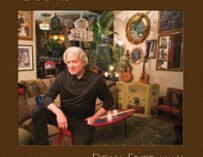

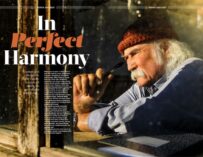
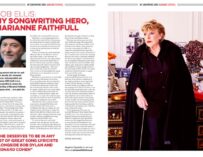
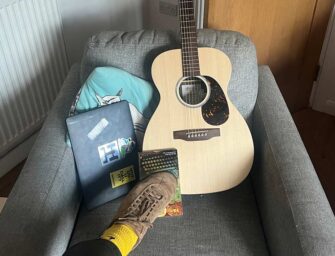
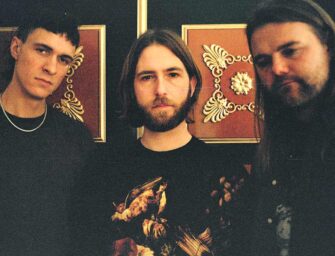
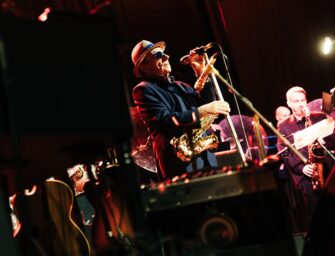























Related Articles